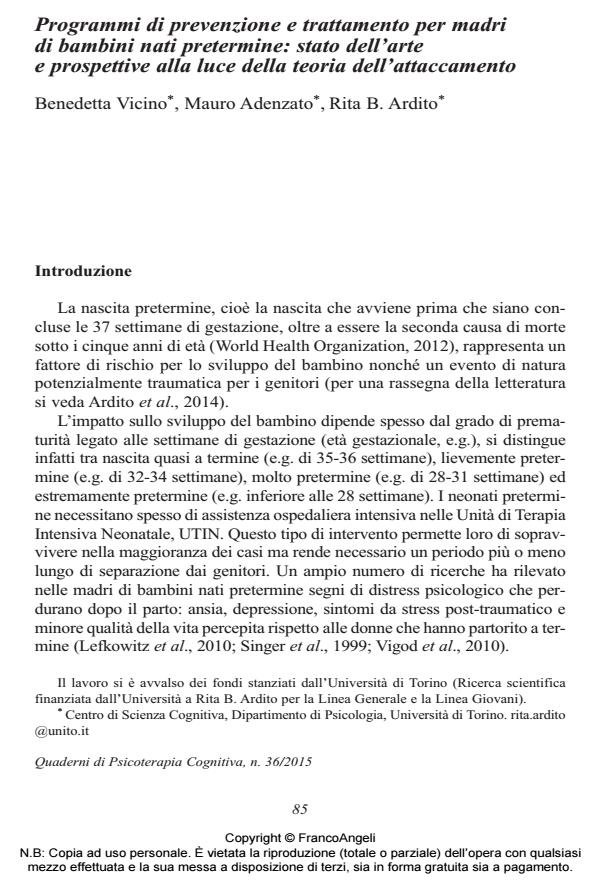Programs of prevention and treatment for mothers of preterm children: state of the art and perspectives in the light of the attachment theory
Journal title QUADERNI DI PSICOTERAPIA COGNITIVA
Author/s Benedetta Vicino, Mauro Adenzato, Rita B. Ardito
Publishing Year 2015 Issue 2015/36
Language Italian Pages 18 P. 85-102 File size 131 KB
DOI 10.3280/QPC2015-036007
DOI is like a bar code for intellectual property: to have more infomation
click here
Below, you can see the article first page
If you want to buy this article in PDF format, you can do it, following the instructions to buy download credits

FrancoAngeli is member of Publishers International Linking Association, Inc (PILA), a not-for-profit association which run the CrossRef service enabling links to and from online scholarly content.
Preterm birth is the second leading cause of death under five years of age and is a risk factor for the development of the child and an event potentially traumatic for parents. The main aim of this paper is to present programs of prevention and treatment developed for mothers of preterm-born children, whose effectiveness has been demonstrated and that have been developed within the framework of the attachment theory. Overall, the programs under consideration show some effectiveness in improving the quality of the mother-child relationship, in supporting child development, and improving the psychological distress of parents. However, the understanding of the mechanisms underlying the programs, the role played by the various risk and protective factors, and how to integrate these knowledge into an effective program of prevention and treatment remain open questions. Here we propose that a useful contribution would derive from a greater consideration of the mother’s state of mind with respect to attachment in designing and implementing these programs: to develop the intervention according to the specific maternal characteristics would facilitate the achievement of positive outcomes for the mother, for the preterm-born child, and for their relationship.
Keywords: Attachment, intervention program, prematurity, preterm birth, prevention
Benedetta Vicino, Mauro Adenzato, Rita B. Ardito, Programmi di prevenzione e trattamento per madri di bambini nati pretermine: stato dell’arte e prospettive alla luce della teoria dell’attaccamento in "QUADERNI DI PSICOTERAPIA COGNITIVA" 36/2015, pp 85-102, DOI: 10.3280/QPC2015-036007